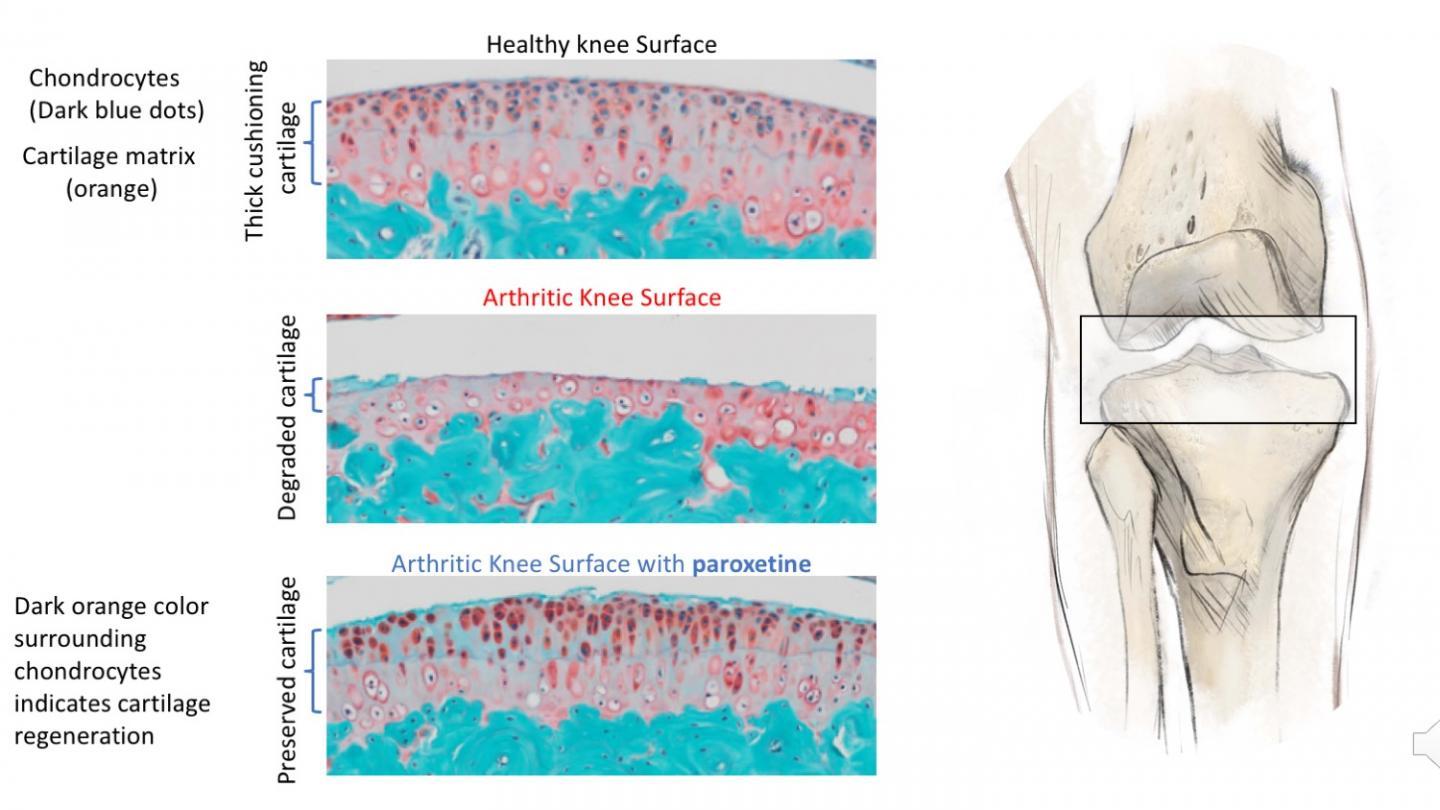As a degenerative disease that gradually wears away at the joint cartilage and causes great pain for sufferers, scientists are searching far and wide for potential cures for osteoarthritis. For researchers at Pennsylvania State University, that search has led them to an approved anti-depressant drug, which they’ve found interferes in the chain of events leading to the condition, halting its progress and even promoting the regeneration of cartilage.
The breakthrough that may provide the first-ever treatment for osteoarthritis centers on an enzyme called G protein-coupled receptor kinase 2 (GRK2). The Penn State team had established through earlier research that the activity of this enzyme plays a key role in the way cells proliferate in heart and kidney disease, which has some parallels with the way the pathological growth of cartilage cells leads to osteoarthritis. Scientists call this process chondrocyte hypertrophy, but have been unable to pinpoint the reasons behind it.
The Penn State researchers may now have found an answer. They started by exploring the activity of GRK2 in patients suffering from osteoarthritis or acute joint injuries and found high levels of the enzyme in their cartilage cells, or chondrocytes. It was found to be playing a central role in the deterioration of the cartilage, errantly leading the cells to destroy the surrounding cartilage rather than keeping it healthy.
“In other words, the cells receive a bad signal to destroy cartilage,” explains Fadia Kamal, assistant professor of orthopedics and rehabilitation at Penn State College of Medicine.
Next up, the researchers engineered mice to be missing the gene for GRK2 in cartilage cells, finding that it prevented chondrocyte hypertrophy, halted progression of osteoarthritis and even promoted cartilage regeneration. In another experiment, they treated the mice with an FDA-approved anti-depressant called paroxetine, which is known to also be a potent GRK2 inhibitor. It had the same effect.
“We found that paroxetine could return cartilage cells back to a normal state and preserve the cartilage surface,” says Kamal.

Fadia Kamal, Penn State
Follow-up experiments on cultured osteoarthritic cartilage harvested from patients undergoing knee replacement surgery again showed that paroxetine could halt chondrocyte hypertrophy and the degradation of cartilage. In light of these promising results, the scientists hope to soon gain approval from the FDA for clinical trials.
“If this trial works, we will have found a new solution to an age-old problem of joints in the body wearing out because of cartilage destruction and loss,” says Kamal. “We hope to intervene with this disease-modifying treatment for the benefit of our patients.”
The research was published in the journal Science Translational Medicine.
Source: Pennsylvania State University
Source of Article